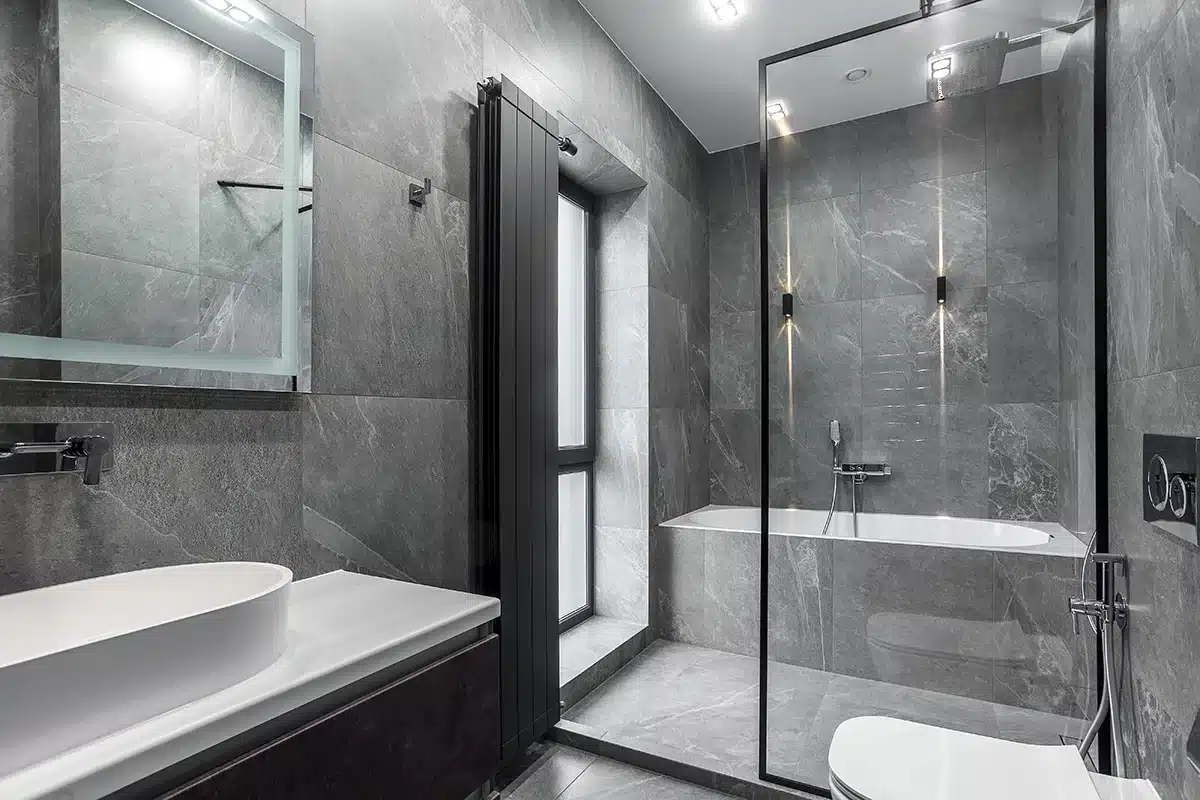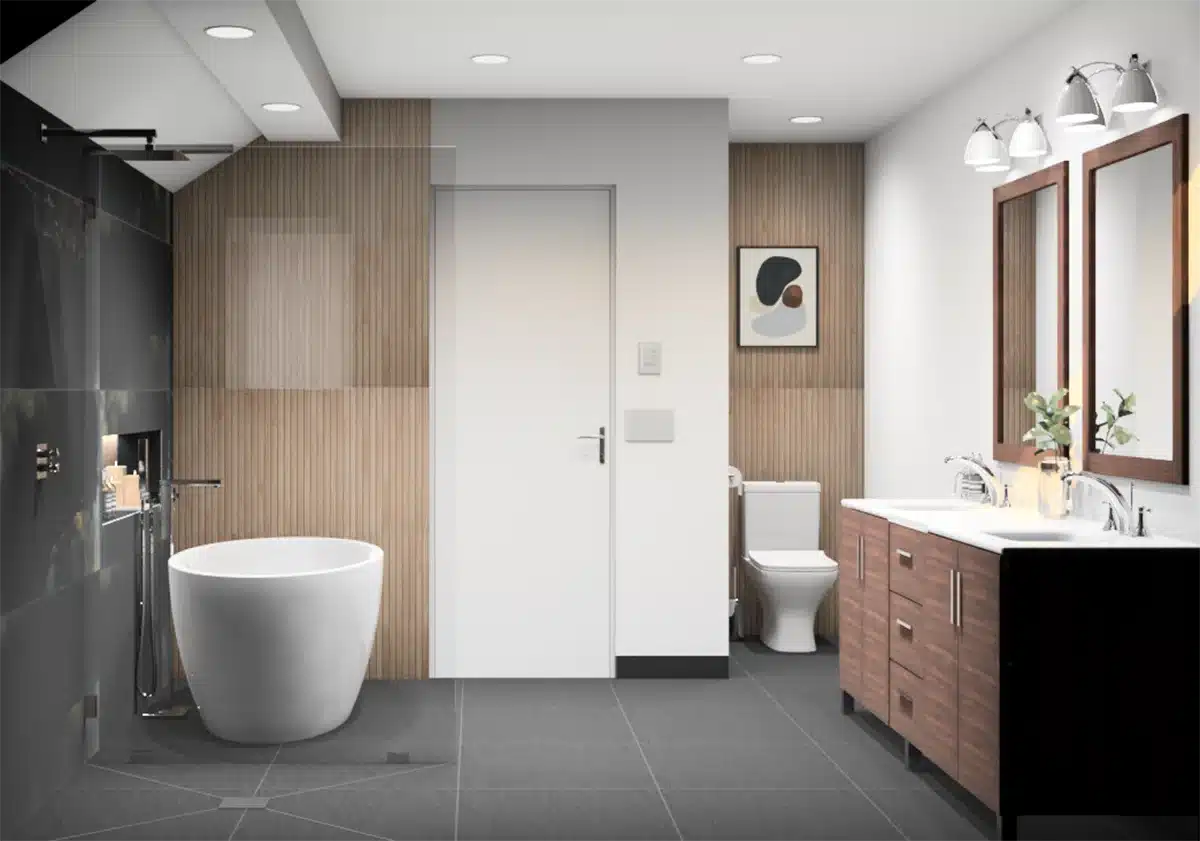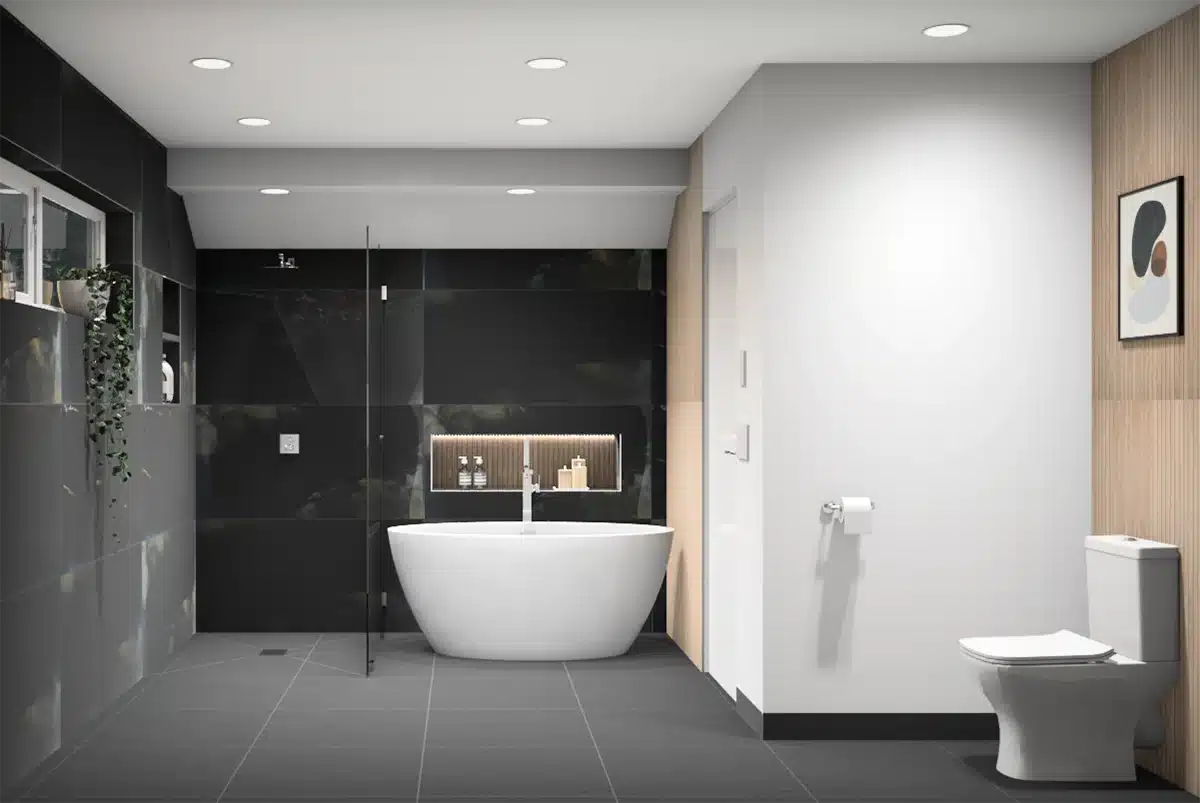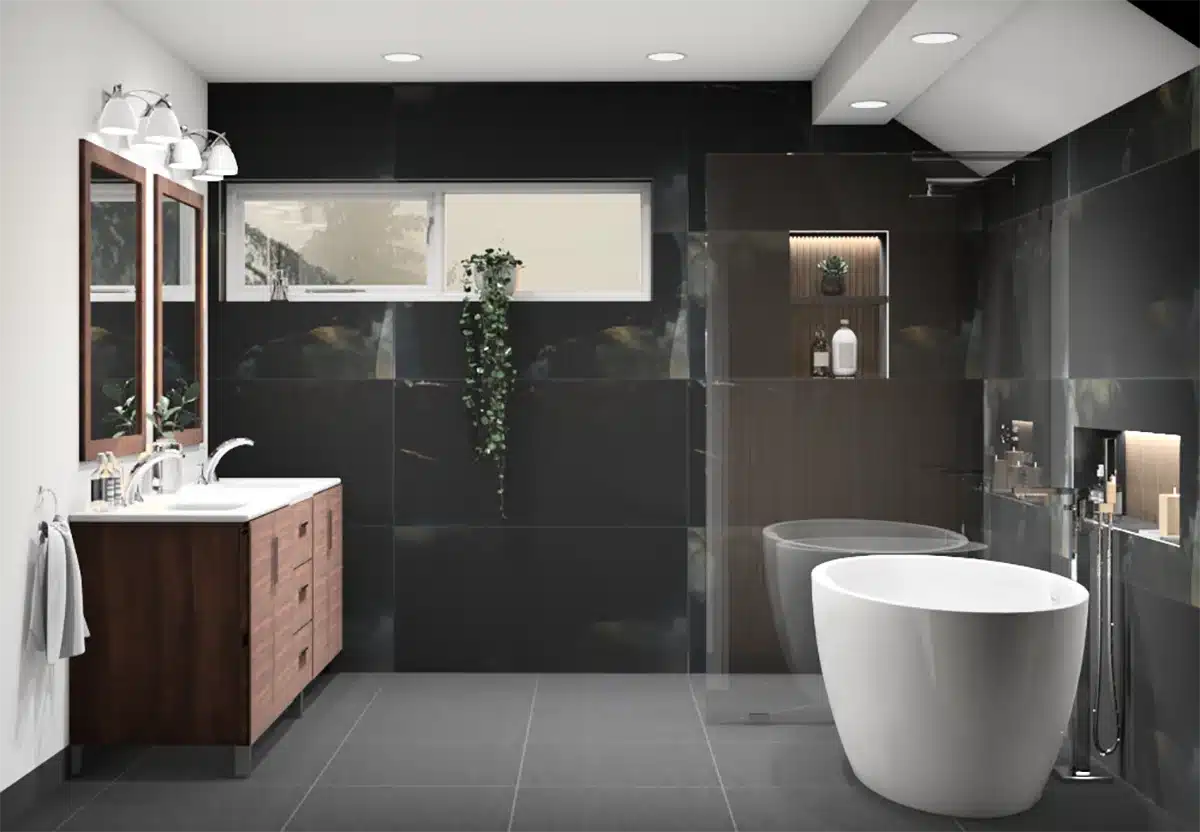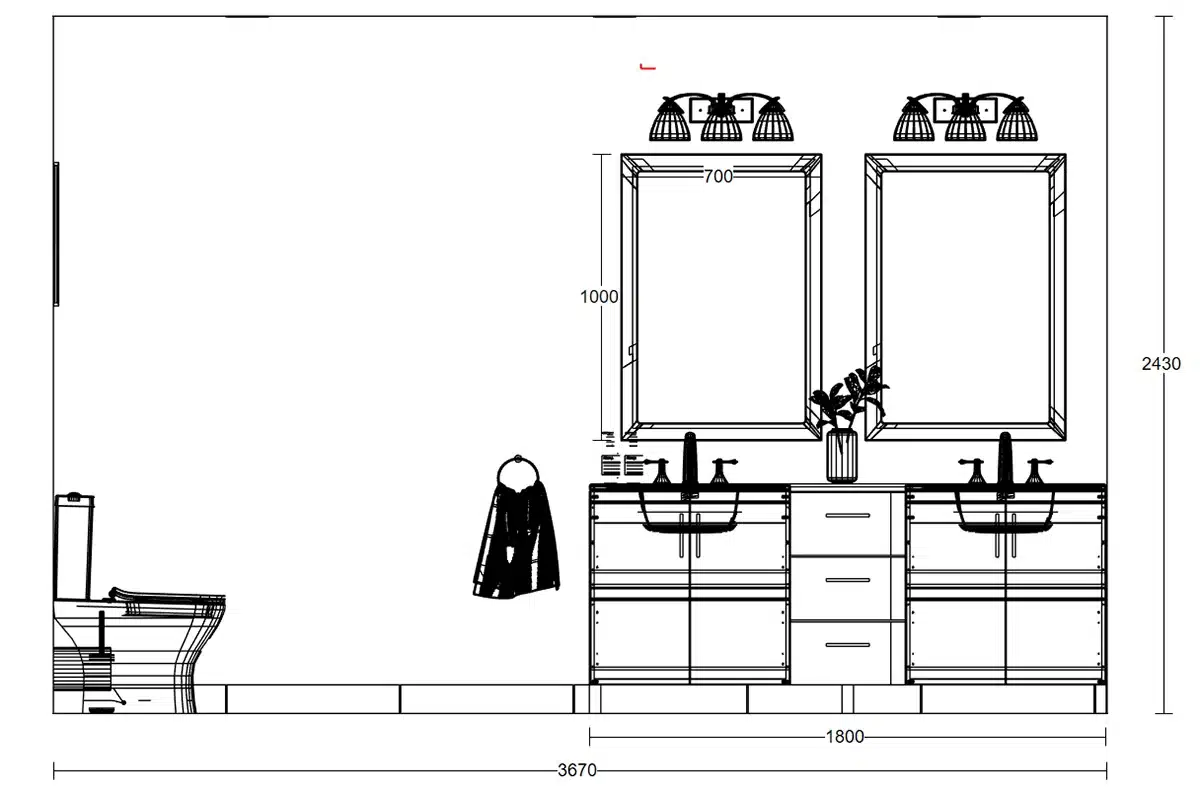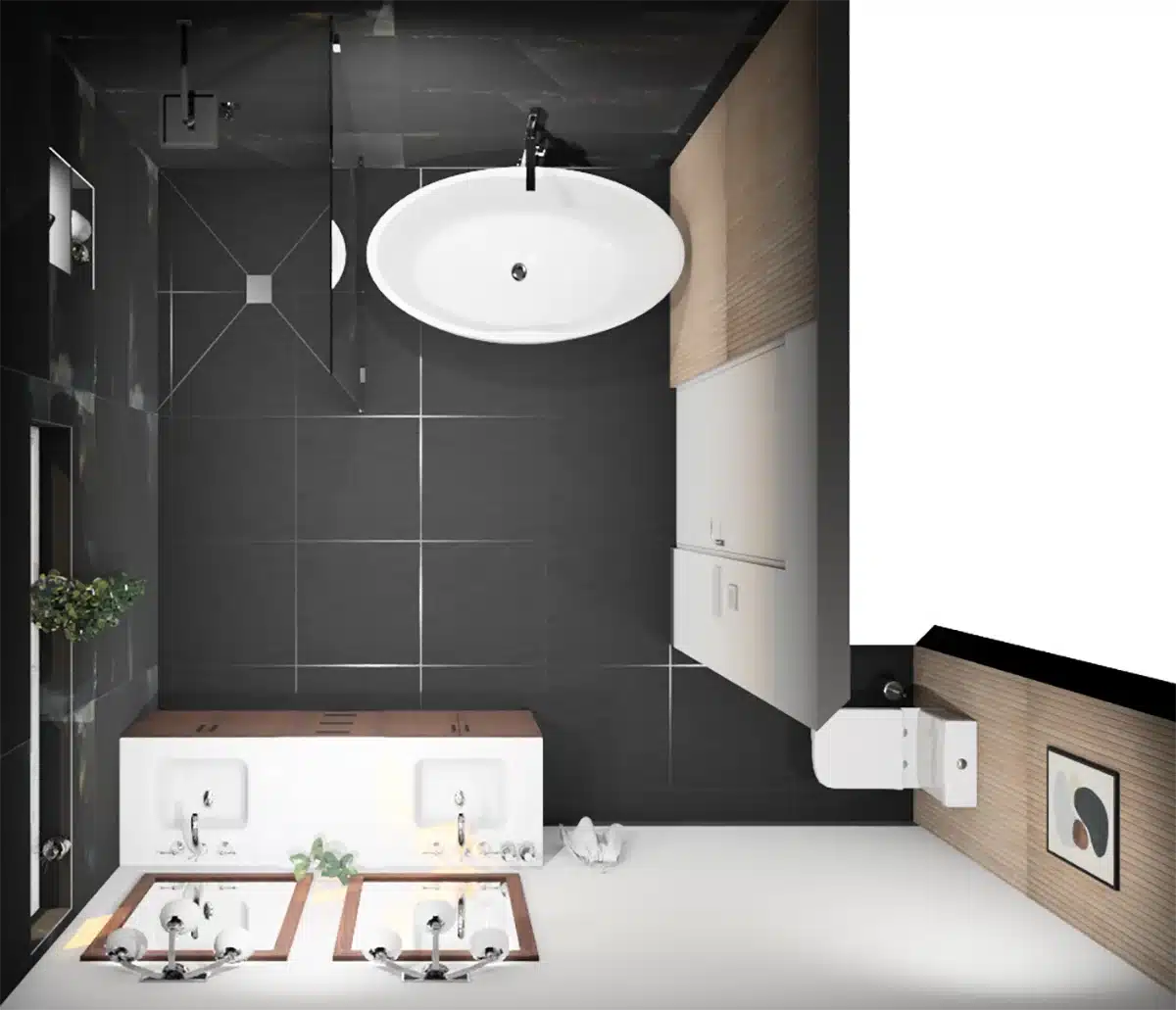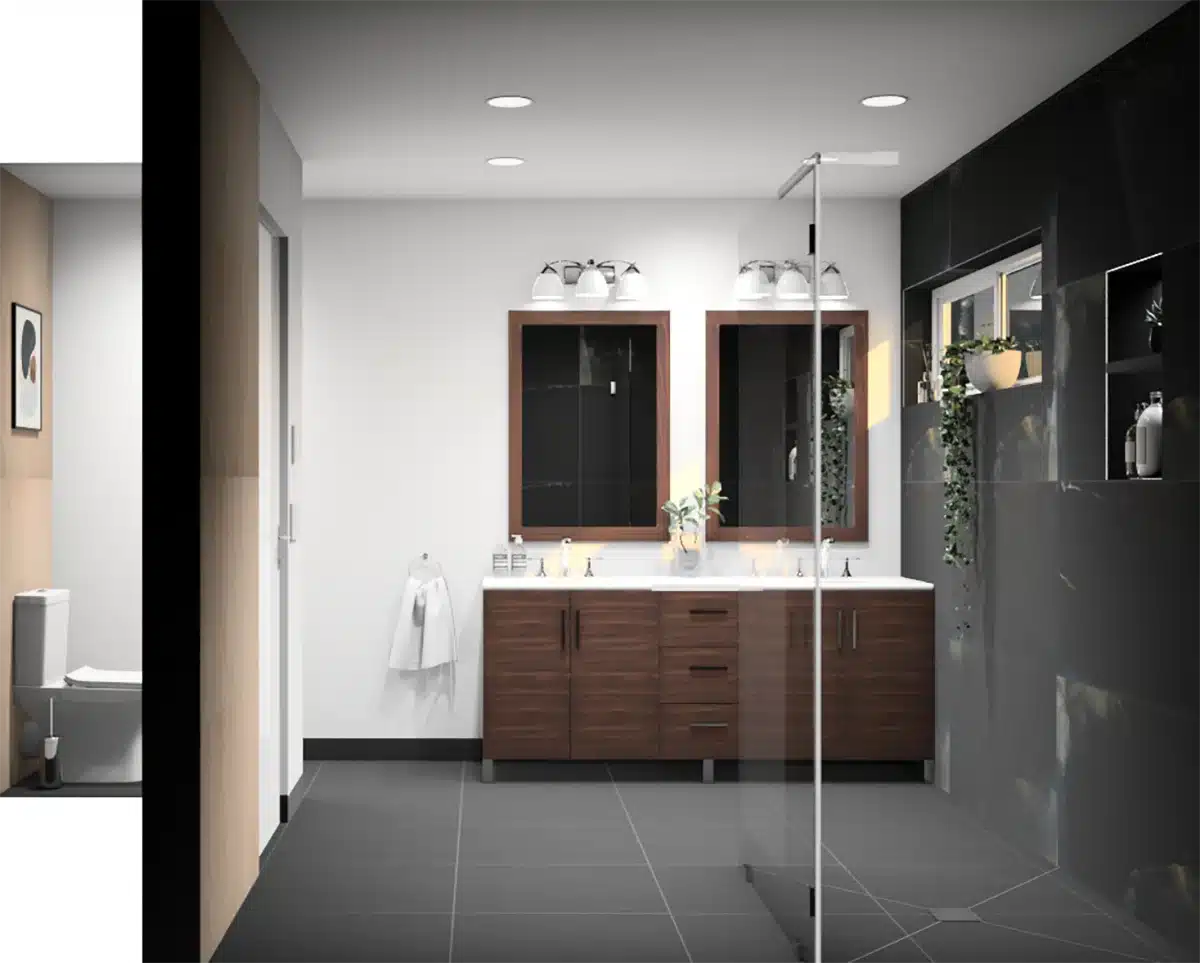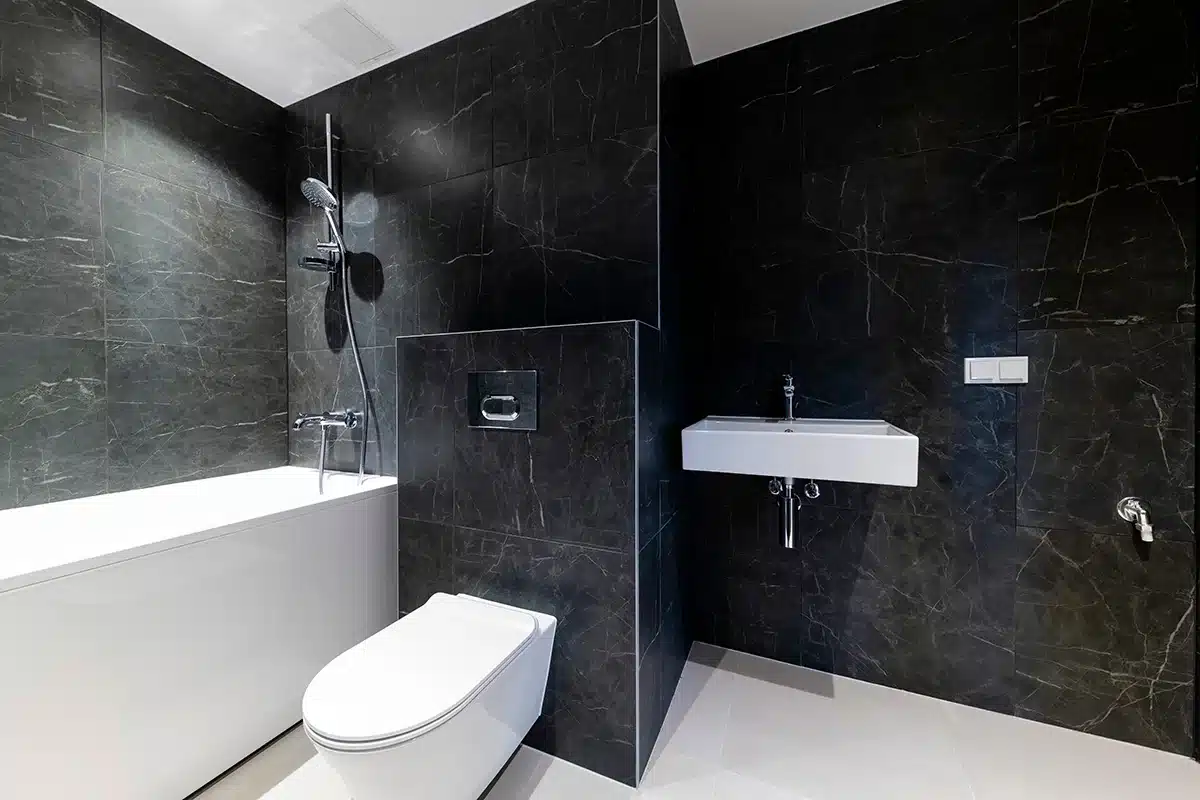Black Bathroom Design
Our reputation for handling remodeling projects is built on delivering quality workmanship, attention to detail, and excellent customer service. Hence, working with us guarantees a stress-free experience and an excellent outcome that meets or exceeds your expectations.
Our Blog
Black Bathroom Design
Our reputation for handling remodeling projects is built on delivering quality workmanship, attention to detail, and excellent customer service. Hence, working with us guarantees a stress-free experience and an excellent outcome that meets or exceeds your expectations.
Black Bathroom Design
Black Bathroom: Design Features and Stylish Photo Examples
From tiles to decor — we explain how to design a bathroom in black, what to pay attention to, and the pros and cons of this decision. Dark colors always look more dramatic and striking. But many — especially those who do DIY renovations — understandably fear them. However, the bathroom is precisely the place to experiment. In this article, we’ll discuss what to consider when designing a black bathroom and how to achieve a stylish interior regardless of size.
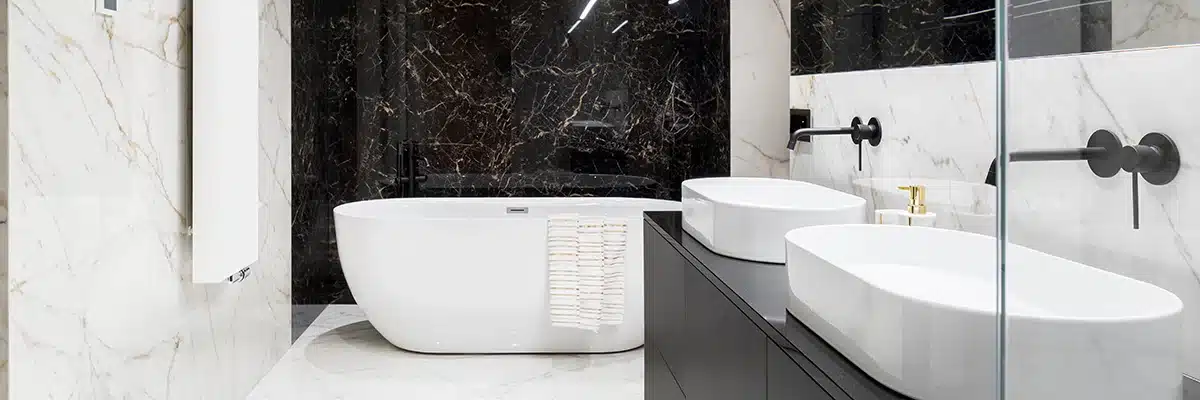
This image showcases a sophisticated and modern bathroom design featuring a luxurious freestanding bathtub, twin white ceramic sinks atop a sleek black vanity, and a striking contrast of black marble with white veins against white marble walls. The design epitomizes a chic and timeless aesthetic for high-end interiors.
All About Black Bathroom Design
- Features
- Color Palette
- Design Ideas
- Finishes
- Plumbing
- Furniture
- Decor Important Considerations
What is important to consider
The main advantage of such a bathroom is its visual component. It’s a strong design statement that elevates a simple hygiene area to a new level. However, designing such a bathroom can easily lead to mistakes that turn a beautiful “magazine” interior into a tasteless, gloomy box. To avoid them, consider the following points:
- Dark colors visually reduce space. To prevent an already small bathroom from feeling cramped, dilute the black base with splashes of light shades, glossy and reflective surfaces, and ample lighting.
- In the bathroom, black tiles or fixtures are not the most practical choice. People consider dark, especially matte surfaces, more prone to marks than light ones. Prepare to see stains, dust, and lime scale on the sink, toilet, and walls. You can address this issue with regular cleaning Also, look for materials with special dirt-repellent coatings and choose glossy or semi-gloss textures.
- If you want to make not only the finishes but also the fixtures dark, remember that models in such a design are usually more expensive than classic light ones.
- If white as a background acts like the walls of an art gallery, merely emphasizing the purity of other colors, black makes them visually more vibrant and active. Consider this effect when selecting additional accent tones.
What to Combine With
Even if you are designing a nearly monochromatic interior, black cannot exist in isolation.To avoid creating a gloomy, oppressive space that feels unwelcoming, it’s essential to balance the dark base with other shades. White The two achromatic colors combine perfectly with each other, forming a classic yet striking pair. A black-and-white bathroom will never go out of style, and this combination suits almost any style, be it classic, loft, or minimalism.
White can be used for:
- Plumbing Fixtures — providing a refreshing contrast to the rest of the background.
- Ceiling finishes.
- Wall finishes — for example, combining black and white tiles or painting part of the surface in a light color.
Bright Colors
Finally, any saturated shades look good against a black background. To prevent the space from looking too gaudy and overdone, choose natural, slightly muted shades. And remember the effect described above: against black, especially matte, any color seems more intense than it is. Therefore, avoid too bright tones.
Gray
Another achromatic color that feels at home with black. Gray has many shades — with their help, you can create an interesting “colorless” space where dark tones smoothly transition into each other. However, don’t forget to add details in light gray shades to balance the amount of black in the palette.
Beige and Brown
Warm natural shades make the bathroom more cozy. They are best revealed in wood textures: for example, MDF furniture or ceramics that mimic wood. Both options look impressive and soften the overall impression of the dark space.
Design Ideas for a Black Bathroom
Now let’s look more closely at how to design a bathroom in dark tones.
Finishing Materials
The technical characteristics of materials primarily influence the choice of finishing materials for the bathroom.
For the floor, porcelain or tile works best. Both coverings are durable, wear-resistant, and long-lasting. They are not afraid of water and household chemicals, making them easy to clean. Since we step on the bathroom floor with wet feet, it’s important that it’s not slippery. Therefore, choose tiles with texture or a rough top layer. From a design perspective, both monochrome models and bright patterned ones (for example, a contrasting black-and-white pattern) or imitations of marble, concrete, stone, wood look great.
Usually, people paint the ceiling white or hang it with a stretch fabric, but in a dark interior, you can experiment and match it to the walls. However, remember to use black or anthracite-gray only for high ceilings, as they will make them visually appear lower. In other cases, it’s better to stick with standard finishes.
Walls — the main field for experiments in the bathroom interior. Classic tiles, medium and large porcelain, waterproof paint, decorative plaster, as well as PVC panels and washable wallpapers are suitable for finishing. The latter, even if they are resistant to moisture, should be glued not in the wet zone but, for example, around the storage system or on the wall at the entrance. If your bathroom is not spacious with high ceilings, it’s better to combine finishes. For example, use black tiles or paint for 1-2 walls, and make the rest lighter. Or use ceramics with a non-contrast pattern and white inclusions.
Plumbing Fixtures
Plumbing In the bathroom, plumbing plays a key role. It must fit not only in size and functionality but also in design.
The choice of what to place in the bathroom hinges on whether it includes a toilet. In the first case, you install a toilet and sink in a separate room.
In the second — you need to fit everything necessary in one space. If there is enough space, the installation of a bidet or hygienic shower in the bathroom complements the standard set (bathtub or shower, sink, toilet).
The main question is what color to choose for the plumbing?
- A white bowl, sink, or toilet will provide a refreshing contrast against the backdrop of finishes and furniture. Moreover, the choice of light plumbing is much wider, including non-standard models (for example, narrow mini-sinks or sitting bathtubs).
- Black models are more expensive but look very impressive. If you are creating a cohesive monochromatic interior without sharp color splashes, this is an excellent option. Black’s ability to visually reduce dimensions will make, for example, a dark acrylic or ceramic bathtub seem less bulky and organically fit into the setting, not attracting unnecessary attention. Similarly, a toilet with an installation matching the wall color will almost merge with the wall. This approach is often used in minimalist or high-tech interiors.
- Colored plumbing fixtures is the hardest to find, but if you manage to find a suitable model, it will become the main decoration of the bathroom and attract attention. Subdued beige or gray products look interesting, as do brighter ones: for example, red, blue, or pink. In such a variant, plumbing becomes a full-fledged color accent.
An interesting technique is to combine models of different shades. For example, choose a black sink and a white toilet or bowl. Don’t forget about the details: faucets, shower heads, pipes — they are also part of the design. They can be matched to the main equipment or, conversely, made accentual. Thus, chrome details and imitations of precious metals look very stylish against a dark background.
Furniture In Black Bathroom Design
Dark furniture looks good against any background, whether it’s monochrome paint or tile with a contrasting pattern.
In the bathroom, storage systems are standardly placed: a vanity under the sink, shelving, shelves, utility cabinets. If the bathroom is spacious, you can organize a spa area by placing a stool or even a compact armchair there. Shelves, regardless of their color, should be equipped with local lighting. If you don’t want the furniture to get lost against the background of black walls and floors, choose it in a different shade (for example, deep brown or stormy gray) or use light details. For instance, a dark vanity with a white countertop.
Decor
Accessories and textiles not only add coziness to the bathroom but also help set color accents and balance the amount of deep shades in the interior.
To make the space visually lighter, use:
- Mirrors in sleek frames, preferably with lighting.
- Bath textiles in light shades in a unified style.
- Dried or artificial plants in glass vases.
- White, gray, or beige containers for skincare products, cleaning agents.
- Accent lighting fixtures (especially crystal or glass products that additionally reflect light).

